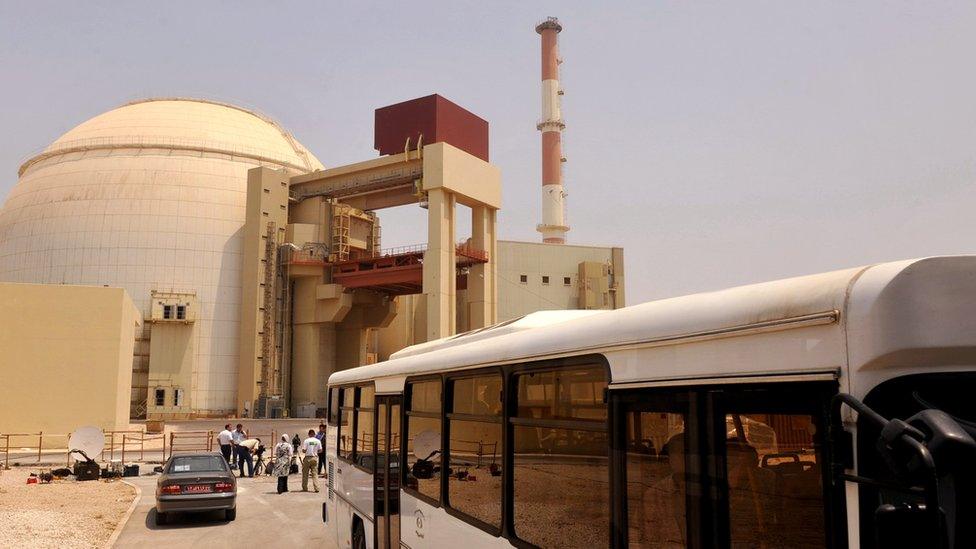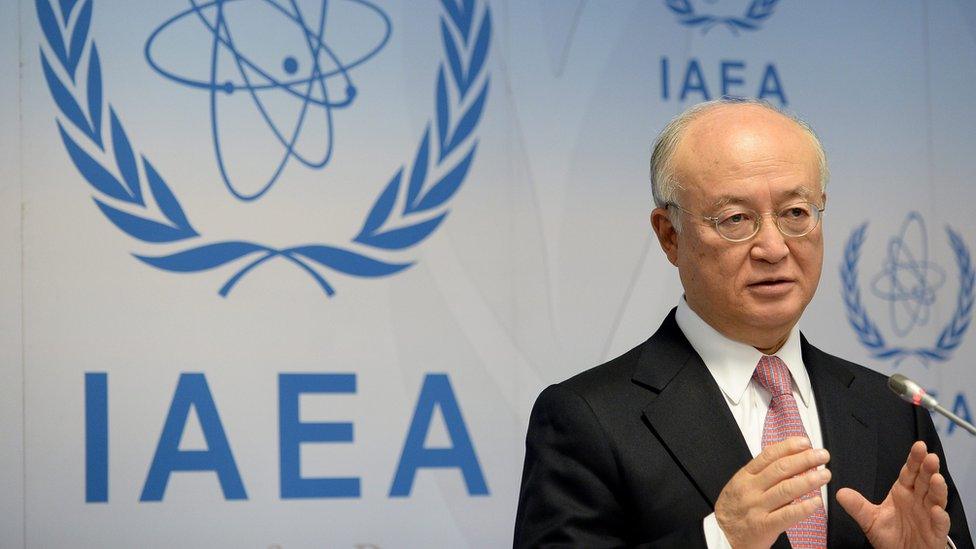Global nuclear watchdog IAEA ends Iran 'weapons' probe
- Published

Iran has always insisted its nuclear programme is peaceful
The global nuclear watchdog, the IAEA, has ended its 12-year investigation into concerns that Iran might be developing nuclear weapons.
The move is seen as a key step towards lifting UN, EU and US sanctions.
The IAEA concluded that Iran conducted nuclear weapons-related research until 2003 and to a lesser extent until 2009, but found no evidence of this since.
The lifting of sanctions, agreed in a July deal with world powers, hinged on the IAEA's findings on the issue.
Iran has strongly denied pursuing a clandestine nuclear weapons programme.
Iranian Foreign Minister Javad Zarif welcomed Tuesday's announcement by the Vienna-based IAEA (International Atomic Energy Agency), saying it showed the peaceful nature of Iran's nuclear programme.
"This resolution goes far beyond closing the issue of so-called PMD (Possible Military Dimension) and cancels the 12 previous resolutions of the council of governors of the IAEA which seriously restricted our country's nuclear programme," Mr Zarif was quoted as saying by Iranian media.

Read more

IAEA Director General Yukiya Amano said Iran was implementing curbs on its nuclear activity

The BBC's Bethany Bell in Vienna says sanctions against Iran could be lifted as early as the middle of January.
The IAEA has sought to closely monitor Iran's nuclear programme and its inspections are set to increase under the Joint Comprehensive Plan of Action, external (JCPOA) agreed with world powers.
The US to the IAEA, Henry Ensher, told the agency's board on Tuesday: "As we close out this important chapter here today, we must remain mindful that we are not closing the agency's ability to investigate any potential concerns that may arise."
The JCPOA will see sanctions lifted over a series of years in exchange for Iran curbing its nuclear programme.
In a statement, IAEA chief Yukiya Amano said he understood Iran was working "at high speed" to implement restrictions on its nuclear activities, as agreed.
He added that it would take some weeks to verify those steps.
Iran's envoy to the agency, Reza Najafi, said Iran hoped to have the necessary curbs in place "within two to three weeks, to accelerate the implementation day as soon as possible".
In a separate development on Tuesday, a medium range missile test-fired by Iran in October was in violation of a UN resolution, sanctions monitors said.
A report by the UN Security Council's Panel of Experts on Iran said that the Emad rocket was a ballistic missile capable of carrying a nuclear warhead.
Under the July nuclear deal, Iran was "called upon" to refrain from developing ballistic missiles for up to eight years.
However, Iran said the test did not violate the agreement.

Key areas of the nuclear deal:
Uranium enrichment: Iran can operate 5,060 first generation centrifuges, configured to enrich uranium to 3.67%, a level well below that needed to make an atomic weapon. It can also operate up to 1,000 centrifuges at its mountain facility at Fordow - but these cannot be used to enrich uranium.
Plutonium production: Iran has agreed to reconfigure its heavy water reactor at Arak, so that it will only produce a tiny amount of plutonium as a by-product of power generation, and will not build any more heavy water reactors for 15 years.
Inspections: International monitors will be able to carry out a comprehensive programme of inspection of Iran's nuclear facilities.
Sanctions: All EU and US energy, economic and financial sanctions, and most UN sanctions, will be lifted on the day Iran shows it has complied with the main parts of the deal.
